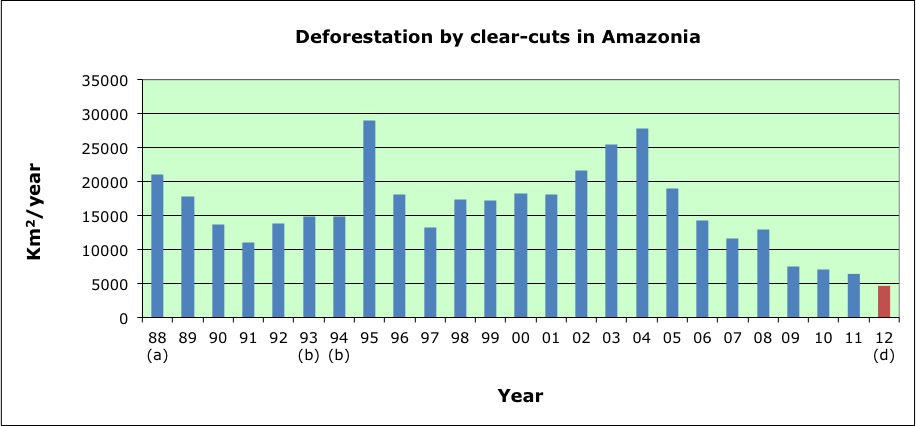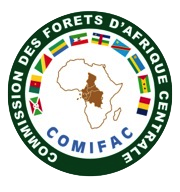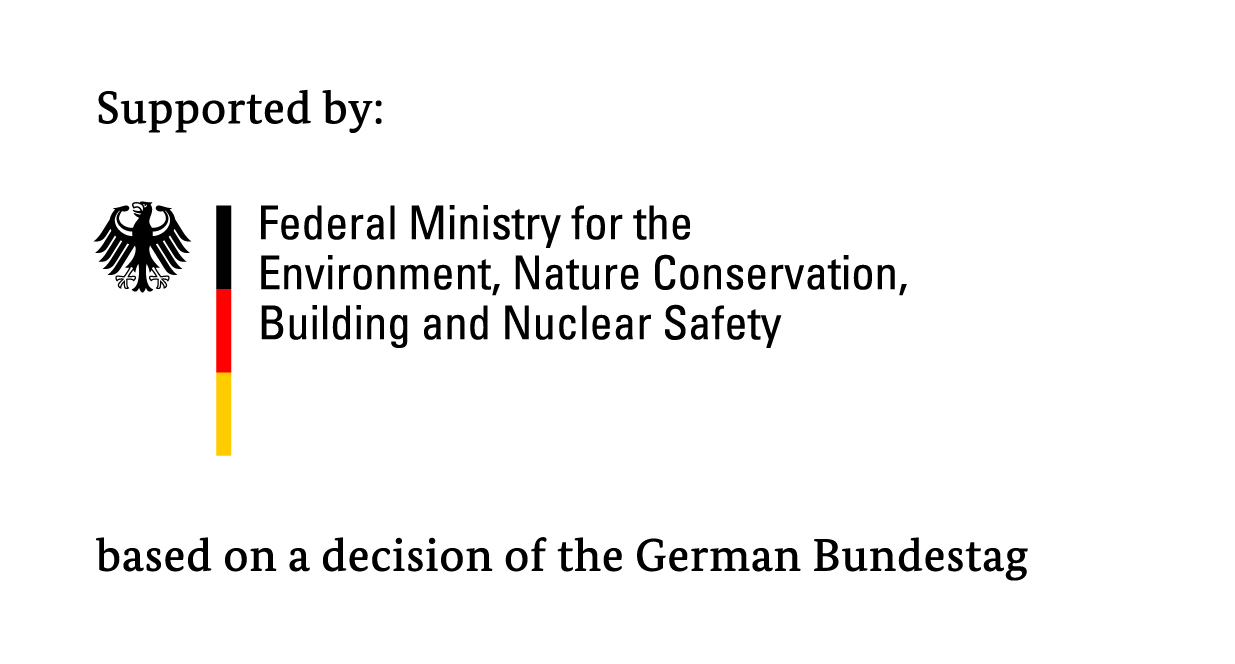
REDD-PAC: Focus on Brazil
Brazil's recent successes and future challenges
The Brazilian Amazonian rain forest occupies an area of 4,100,000 km2 where 720,000 km2 have been deforested since the 1970s. Recent work by INPE and EMBRAPA (Brazil's Agricultural Research Agency) shows that pasture accounts for 63% of the forest cuts in Amazonia. Cattle ranches in Amazonia use extensive practices, with less than 1 head of cattle per hectare. Cash crop agriculture accounts for only 4% of the deforestation. More than 20% of the area has been abandoned and is now regrowing as secondary vegetation.
In 2004, the Brazilian government launched the Action Plan for Prevention and Control of Deforestation in the Legal Amazon. Brazil set up a combined effort of improved satellite monitoring, increased law enforcement, and creation of protected areas. In 2008, reacting to a surge in deforestation, the government imposed restrictions on bank credits. These actions brought about a significant drop in deforestation rates, from 27,000 km2 in 2004 to 4,700 km2 in 2011.

These positive results led the Brazilian government to include ambitious deforestation reduction goals in the National Law on Climate Change, passed in 2009. The law uses the average rate for the period 1996-2005 as a baseline scenario for deforestation. It sets a target of 80% deforestation reduction in Amazonia for the period 2006-2020, relative to the baseline (3,900 km2). By 2012, Brazil has already achieved 74% of the proposed 80% reduction.

The design of REDD+ policies in Brazil is different from other forest nations. Brazil has already fixed its baseline and its targets for reduction until 2020 and the country has a reliable MRV system. One of the aims of the project is to study whether REDD+ has a role to play in Brazil as an incentive system so that the targets can be met. Also, the REDD-PAC project will analyse the impact of REDD+ in Brazil for recovery of the areas already deforested.
Consider that 720,000 km2 have been deforested in Amazonia, and that 20% of this area (150,000 km2) is now abandoned and that 345,000 km2 are used for extensive cattle raising. Part of this area could be set aside as a carbon sink, under conditions to be set up by agreement between the government and private landowners.
Brazil has ambitious goals of simultaneous reduction in deforestation in Amazonia and Cerrado,increase production and exports of cash crops and biofuels, and intensify cattle raising. The REDD-PAC project will examine the various tradeoffs for land policy so that this plancan be achieved.

International Institute for Applied Systems Analysis

National Institute for Space Research - Brazil

Commission des forets d'Afrique Centrale/Central African Forests Commission

United Nations Environment Programme World Conservation Monitoring Centre

Instituto de Pesquisa Econômica Aplicada

Germany International Climate Initiative
